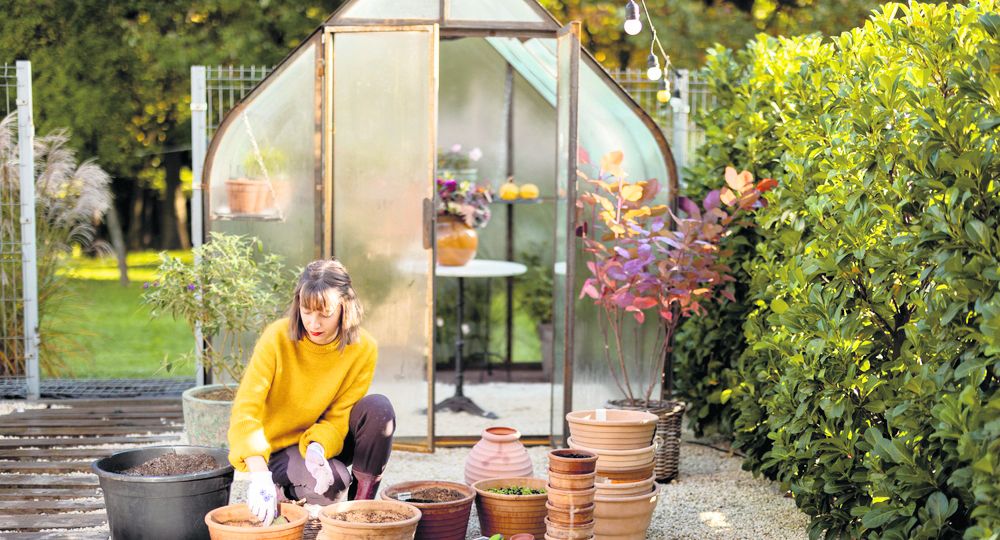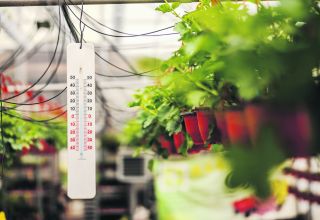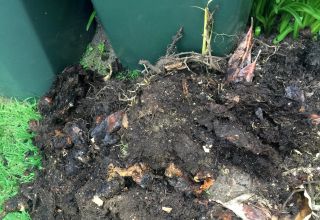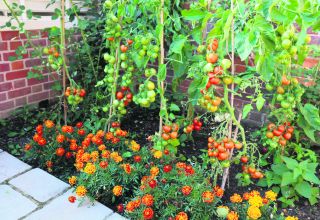Autumn, particularly the month of October, is a critical time in the gardening calendar. The work you do now can set the stage for a healthy, vibrant garden in the spring. October is far from a time to rest—it’s a time to prepare, protect, plant, and plan. October in the garden is a time of endings and beginnings. While many plants are winding down, gardeners are just gearing up. The work you do now lays the groundwork for success next year. Whether it’s planting bulbs, caring for your lawn, clearing borders, or simply watching wildlife prepare for winter, autumn offers a wealth of rewarding garden tasks.
Clearing and tidying
October is the perfect month to start clearing out the remnants of summer. Spent annuals, dying foliage, and fallen leaves can harbour pests and disease if left unattended.
Remove spent annuals and pull up annuals that have finished flowering or are beginning to rot. Compost healthy plants and dispose of diseased material.
Cut back perennials by trimming perennials such as peonies, hostas, and daylilies after the foliage has died down.
Rake up fallen leaves from lawns and borders. Compost them or collect them for leaf mould, a valuable soil conditioner.
Removing weeds in autumn prevents them from setting seed and reduces your workload in spring.
Tidying the garden now gives you a clean slate for winter and early spring planting, and it also reduces overwintering pests and diseases.
Planting for spring
October is a great time for planting—especially spring-flowering bulbs and hardy perennials. The soil is still warm from summer, providing ideal conditions for root development. Daffodils, crocuses, hyacinths, and snowdrops can go in the ground now. Tulips are best planted later in the month or in early November to reduce the risk of fungal disease. This is a good time to divide overgrown clumps of plants like hostas, geraniums, and daylilies. Replanting them now allows roots to establish before winter sets in.
Autumn is ideal for planting trees, shrubs, and hedging. The cool, moist conditions help them settle in with minimal stress. Planting in October gives your garden a head start come spring, ensuring a vibrant display without the rush of spring planting.

Soil care and composting
Soil health is key to successful gardening, and autumn is a great time to improve it.
Spread well-rotted manure, compost, or leaf mould over garden beds. This improves soil structure, adds nutrients, and supports soil life. Apply a thick layer of mulch to protect plant roots from frost and suppress weeds over winter.
Continue adding garden waste to your compost bin. Mix green (nitrogen-rich) and brown (carbon-rich) materials to maintain a healthy compost heap. Fallen leaves, chopped stems, and grass clippings are perfect ingredients. Healthy soil now means stronger, healthier plants in the spring.
Lawn care
Autumn is a vital time for lawn maintenance. The cooler temperatures and moisture help lawns recover from summer stress. Let the grass grow a little longer before the final mow of the season, typically in late October. Leaves left on the lawn block sunlight and can create bare patches. Spike the lawn with a garden fork or aerator to improve drainage and reduce compaction. Fill in thin or bald patches with grass seed to thicken your lawn. Use an autumn lawn fertiliser with lower nitrogen content to strengthen roots and improve resilience over winter.
Caring for your lawn in October ensures it bounces back greener and thicker in the spring.
Greenhouse and indoor preparation
As night time temperatures drop, it’s time to think about protecting tender plants. Plants like geraniums, begonias, and citrus trees should be moved indoors or into a greenhouse. Wash the glass to maximise light and disinfect surfaces to prevent pests and disease. Wrap containers with bubble wrap or fleece to protect roots from freezing.
Proper preparation now can save your valuable plants from frost damage later.
Pruning and cutting back
Certain plants benefit from pruning in autumn, though not all. Lightly prune rose bushes to prevent wind rock during autumn storms. Plants like phlox and echinacea can be cut down to ground level once their leaves have died back. Give hedges a final trim before winter. This keeps them neat and reduces snow damage.
Plants like forsythia and lilac should be pruned right after flowering, not in autumn, to avoid removing next year’s buds.
Be selective in what you cut, and always use sharp, clean tools.
Wildlife
Autumn gardening is also about giving nature a helping hand. A pile of logs, leaves, or hollow stems can provide winter shelter for insects, frogs, and hedgehogs.
October is a good time to start feeding birds, helping them prepare for the colder months ahead. A clean birdbath or small pond supports wildlife, especially as natural water sources freeze over. Balancing tidiness with wildlife-friendly practices ensures your garden remains a haven for biodiversity.
Planning for next year
October is also a time for reflection and planning. Review the growing season, what worked well? What didn’t? Make notes while it’s fresh in your mind. Look through seed catalogues and plan your plantings for next year. If you grow vegetables, start planning your crop rotation to maintain soil health and avoid pests. Now’s the time to oil, sharpen, and store tools properly to prevent rust and prolong their life. This planning phase is just as important as digging or planting it sets you up for a productive next season.












